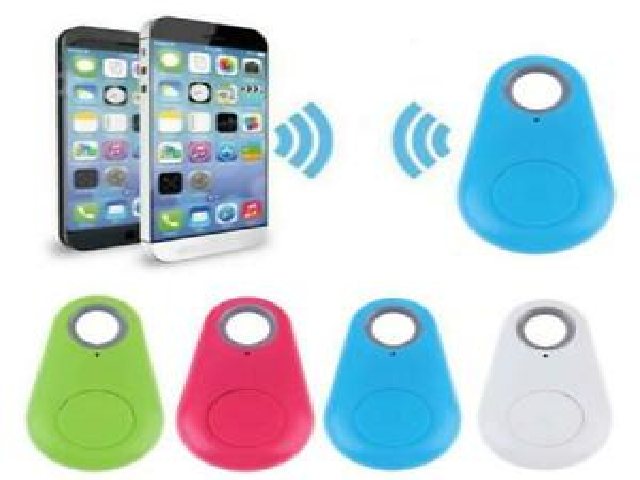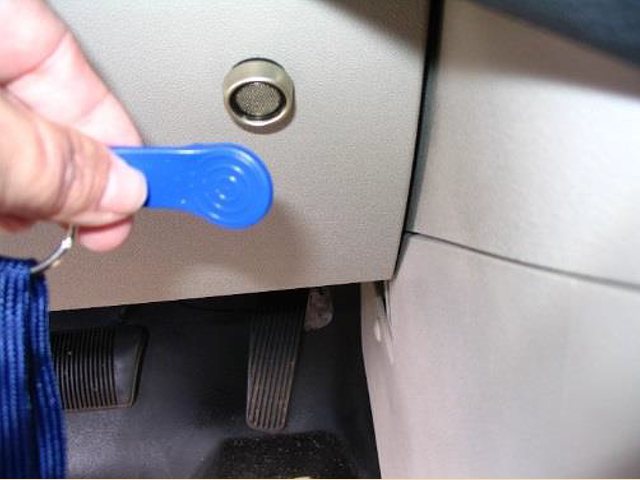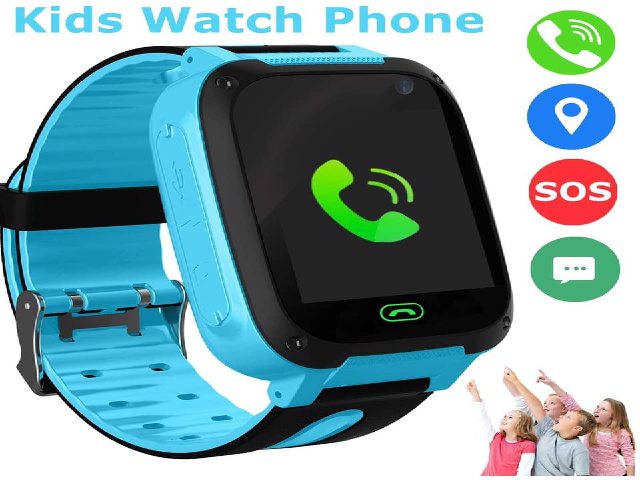Children’s safety is a primary concern among parents. Sometimes, even in their teens, we still see parents constantly checking out on their children to make sure that everything is okay.
Parents taking care of children who just recently started going out on their own understand this pretty well. Even though you should trust children and their ability to take care of themselves, it’s normal to always be on the lookout for your little ones.
As such, one of the simplest ways that parents can keep tabs of their children is through the use of GPS trackers for kids. Keep reading below to find out how these devices work and how you can choose the best one for your family.
How Does GPS Work?
GPS is an acronym for Global Positioning System. It is a navigation satellite system that can provide not just one’s location, but also their velocity and time synchronization.
The original system was developed to determine the geographical locations of the military and civilians accurately. It makes use of the satellites orbiting Earth. The information sent by these satellites gets triangulated, making it possible to determine a user’s location.
Nowadays, such technology is present in our everyday devices. Cars have it to assist in navigation, and applications such as Waze or Google Maps use this technology to help drivers pick optimum routes. This allows drivers to avoid roads with heavy traffic, and can help them conserve fuel and shorten their travel time.
This technology is now being used for entertainment as well. Mobile games such as Pokemon Go and Wizards Unite use it to simulate a real-world environment. Mobile phones use this system as a navigation tool and to enable specific applications, such as Uber.
What are GPS Trackers for Kids?
A kids GPS tracker is a device that enables a parent to pinpoint a child’s location. A kid tracker is usually small and portable, thereby allowing for location tracking that doesn’t get in the way of your child’s activities. The right device will have days of battery life while letting you monitor your child’s real-time location anywhere in the world. Some trackers for kids even have an accompanying smartphone app for ease of use.
These devices also have emergency features that your little ones can use if they get lost. This is usually activated using a help or SOS button that can be pressed in case of emergencies; your device might even offer two way calling. All things considered, they’re absolutely necessary for parents’ peace of mind.
What to Look for in a Kids GPS Tracker
With many device options for kids available in the market, choosing the right tracker can be difficult. How do you know which one will do a great job of helping keep your child safe? Here are some of the things that a parent should look out for when choosing the best device for their kids.
1. User-friendly
It’s safe to say that ease of use should be a major consideration in choosing a device for your child.
Of course, the right device should also be easy to operate on the parents’ end. As mentioned previously, some devices have companion applications. Seeing your child’s location in real time right in your phone also means you can start using the device right away, without spending too much time learning fancy software.
Indeed, there are lots of things you can do with these companion applications. Aside from seeing snapshots of where your child visited, you (or perhaps other family members if you can register them in the system) can also be immediately notified if your child is out of the device’s range.
2. Accuracy
Accuracy is a major consideration when looking for the best GPS device for your kid.
As much as possible, check on reviews of parents who use a particular device. You can look for comments about its accuracy. As a good rule of thumb, the right device should display your child’s GPS location within a radius of a few feet.
3. Range
Most devices make use of wireless signals to help their location services. This means that they often rely on cellular networks and can work almost anywhere with the proper sim card. When looking for the best GPS device, you should look for ones that can work properly, even in areas where cellular reception may be spotty.
Geofencing is also something to look out for.
Simply put, this is a virtual perimeter that applies to the real world. It can be used to indicate specific zones or boundaries where kids are allowed to go. Using geofencing, you can also specify prohibited areas. The tracker will then send a notification if a child goes into an area that is prohibited, thereby adding another layer of safety when it comes to using this tool.
As much as possible, get a device that will work even inside buildings. This is an important consideration to make, as your child tracker might not work well inside insulated walls or huge buildings. Devices with low ranges can make it difficult for you to track your child.
4. Communication
Some trackers have two-way communications embedded in them, which may be a must for some families. With two-way communications capabilities, little ones can immediately speak with parents if needed. This is especially useful for kids who are too young to have their own mobile phones and have no other way to contact their parents.
A help button, a panic button, or an SOS button will be useful for your little ones in case they need immediate assistance from their parents. A child just needs to press the help button in case the child gets lost or needs help. A notification will be sent to the child’s parent to make the parent aware of the child’s situation.
It can also be a good way for a child to alert a parent silently if the child is in danger. Knowing that there is a way for the child to discreetly inform a parent that help is needed can bring peace of mind to both the parent and the child.
Be sure to orient the child on how to use an SOS button during emergencies properly. It is also important to emphasize to a child the importance of using the help button only when truly needed.
5. Games
Since some might not be too keen on wearing a GPS tracker, having a tracker with embedded games can help convince a child to keep wearing their device. On that note, it’s important that your kid tracker still offers long battery life even with all these games included. Battery life should not be sacrificed for a quick game!
6. Design
Like most of the products and devices that we purchase, it wouldn’t hurt if a kids GPS tracker works well and still looks great. Since we are talking about a device that kids will use, you should try and look for trackers that will appeal to them. This will also lessen the likelihood of kids refusing to bring a tracker with them.
A GPS tracker for kids should be easy to use for young children. When shopping for a GPS watch for kids, keep in mind that the user should easily use the tracker in case of emergencies.
On that note, the best GPS trackers are are appropriately labeled and can easily be read by a young child. If the user cannot read just yet, look for a tracker with big buttons. Younger kids often haven’t achieved the level of dexterity required for using devices with small buttons. This might render the GPS tracker useless if the child cannot correctly use the tracker in case of emergencies.
7. Quality Materials
The best GPS device for kids should also be comfortable to wear. Look for one that’s made of materials that won’t irritate the skin — you can easily find a child tracker made of hypoallergenic materials for safe wearing.
Stretchable materials are also ideal for a GPS watch. These are comfortable to wear and won’t cause rubber burns. When a material is non-stretchable, it will frequently rub against the skin and result in skinning or chafing. This can cause discomfort and may result in a child refusing to use their GPS tracker again.
Using flexible or stretchable materials also has practical benefits. As a child grows, the child might outgrow the GPS tracker. Grown spurts can make a GPS tracker too small in just a matter of months. GPS trackers made of flexible materials can keep pace with the wearer’s growth. This is economical since a parent won’t need to buy new GPS trackers every time they experience a growth spurt.
8. Durability
A good GPS watch for kids should be made of durable materials. Children are very active, and their device should be able to keep up with such a lifestyle. The best GPS tracking device should be shock resistant, and maybe even waterproof if your little one is really adventurous.
As much as possible, you’ll want one with a shatter-proof face. This can help protect the tracker from getting cracked or damaged.
GPS trackers are also dirt magnets and need frequent washing. Washing your tracker frequently can help keep it safe from damages, and can also help safeguard the health of the your child.
Durability is a key consideration if you really want some peace of mind when letting your kids use their GPS watch. A shock resistant watch should still allow for two-way voice calls should the need arise.
9. Long Battery Life
Tracking location in real time can quickly drain battery life: this is evident to those who use GPS tracking extensively on their mobile phones. Some trackers also update their location every 10 seconds, which is great for safety but not so much for battery life.
As such, try and look for a kid tracking device with batteries that last for more than one day when fully charged.
Aside from having a one-day battery life, you might also want to look for one that has fast-charging batteries. Some GPS trackers also have mobile charging stations that can be plugged into a car’s charging port. Relying on a device with long battery life means you can allow your child to wander a little far away while still knowing you can easily have a two-way voice call as needed.
10. Price
Good products don’t always have to be expensive. The best GPS trackers pack outstanding features at a competitive price; this is an important consideration, as safety should be something that is accessible to all families.
When working on a budget, the best thing to do is look at the features of a GPS tracker.
Lots of device brands try to outdo each other by coming up with additional features. This means that the more expensive trackers will usually have more features compared to cheaper ones. Analyze these features and determine if these features are vital or if they are just nice-to-haves.
Types of GPS Tracker for Kids
GPS trackers for kids come in different forms. Each form has its advantages and disadvantages, so it’s important to choose the right one that ensures your kid’s safety, promises ease of use, and fits into your budget.
GPS Tag

This is the simplest form of GPS tracking for kids available today. They are small and discreet. They are also lightweight. These tags are easy to attach to a child’s belt loops, or even to shoelaces.
The disadvantage of this type of GPS tracker is its limited functionality. They can accurately track a child’s location, but that’s just about it. It doesn’t have other functionalities like two-way calling.
This is an excellent option, though, for those who need a simple tracking device without all the bells and whistles of a more complex option.
Fob

Fobs are tracking devices that are bigger than GPS tags: they are about the same size as car key fobs. What’s good about these trackers for kids is they often have embedded two-way speakers on them, which will allow parents and children to speak to one another in case of emergencies.
However, your kid might not enjoy having it on him or her because of how bulky these fobs can be.
Smartwatch

These are the most feature-packed options you can get among GPS kid trackers. A tracker watch work just like smartwatches for adults. Aside from tracking one’s location, most of them have call and text functionalities thanks to a sim card. They also have LCD screens where children can read information, such as an Amber alert.
Children can also play games on smartwatches, and it can be used as a fitness tracker in instances where your child’s health has to be constantly monitored.
With all of its features, a GPS watch is the most expensive tracker on the market.
Alternatively, an inexpensive version that doesn’t have all the features of a tracker watch for kids is a a GPS bracelet. This is just a simple bracelet containing a the same location tracking mechanism. These bracelets are often just GPS tags on a wristband with a digital clockface.
FAQ
No, it is not possible to implant a tracking chip into a child. The current technology we have doesn’t allow for a tracking chip to be implanted under the skin, and that’s without all the other health questions that come with this kind of technology.
The smallest GPS tracker is the Nano Hornet. It was developed by OriginGPs and measures 10 x 10x 5.8mm in dimension and weighs just 2.5 grams. Because of this, it can easily be embedded into a necklace pendant or any other small carrier to make sure it doesn’t interfere with your kid’s day-to-day activities.
The safest and most reliable way of monitoring a child is through a GPS tracker for kids. If you want to track your child, you need to use the companion app that came with the tracker. The app will show you a real-time view of the location of your child.
Most companion apps also let parents set specific times when a parent will receive automatic updates about a child’s location. A parent can choose to have the tracker send a child’s location every few minutes, every 30 minutes, or whatever intervals a parent chooses.
Conclusion
Technological advancements have been making lives easier these past few decades. Most notably, GPS tracking developments have evolved to guarantee children’s safety. Lots of these trackers have a dedicated SOS button, can work across all sorts of time zones, and are still easy to use for families.
The best GPS trackers for kids can help keep young children safe at all times. Indeed, children can even use their tracking devices to seek help during emergencies: some trackers even work as two-way radios so parents can keep in touch with their children.
Before purchasing a GPS tracker for kids, check all information about the tracker you plan to buy. This will help ensure that you are getting the best possible tracker for your kid that can keep your child safe and secure at all times.
Tell us what kind of GPS tracker for kids you prefer. Comment below if you have any questions, or if there’s anything else you want us to tackle!

Dennis has been a professional security consultant space based out of Chapel Hill for over 15 years. His experience runs the gamut between government and private organizations (specifically in the finance and insurance sector) with a specialty in consulting for executive and high-value protection surrounding Kidnap and Ransom mitigation.




